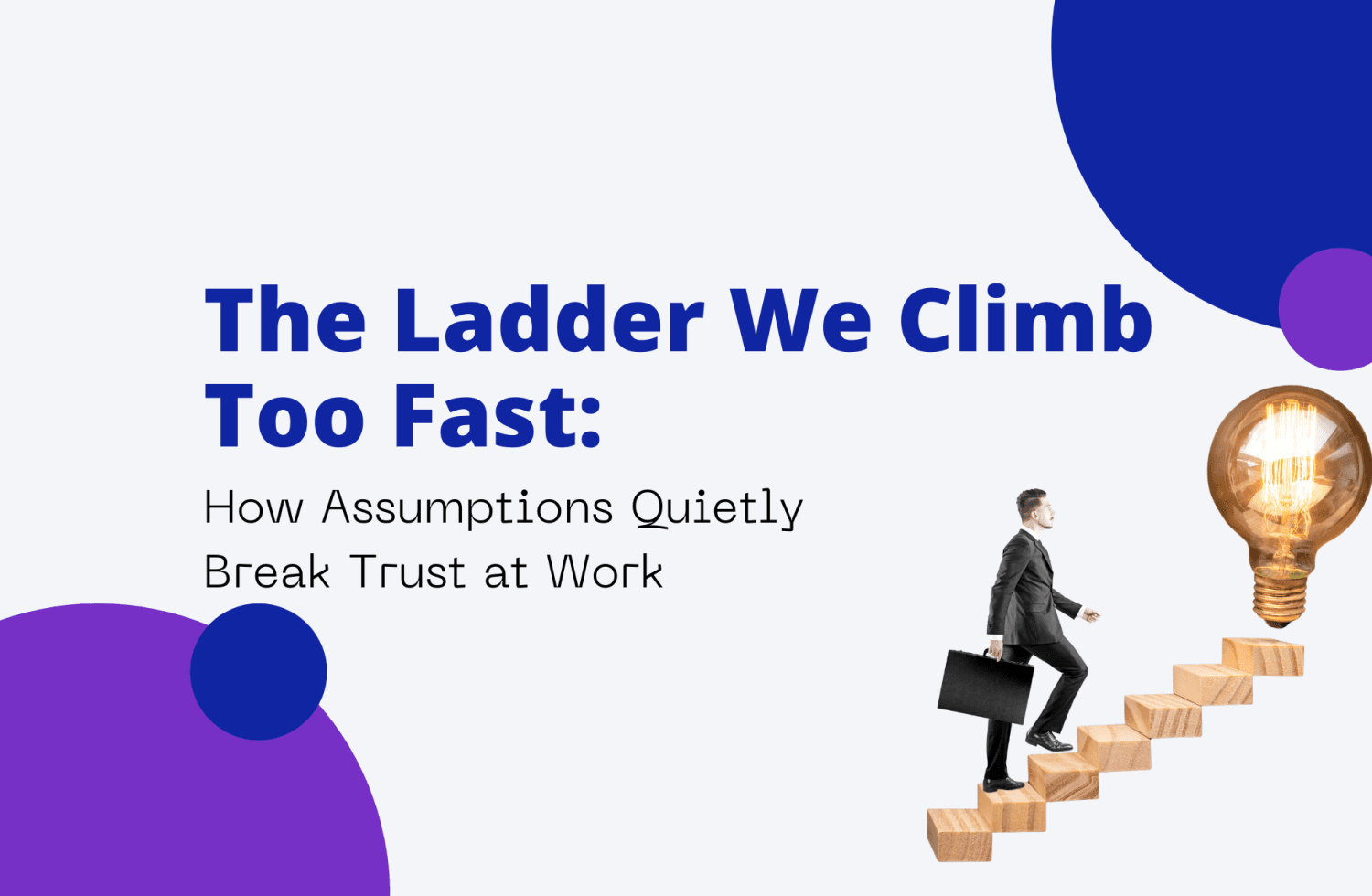Click Here to Download Today's PDF.
We live in a world that rewards volume.
The loudest voice in the room.
The person who talks the fastest.
The one who always has something to say.
The person who seems to always have an answer—even when no one asked a question.
But real leadership doesn’t sound like that.
Not in the moments that matter.
Not when people are hurting.
Not when decisions are hard.
Not when teams need clarity or trust.
Real leadership sounds quieter.
It sounds more like a pause. A breath.
A leader holding space for others to speak first—without interruption, without assumption, and without waiting to jump in with a solution or opinion.
Because leadership isn’t just about clarity or direction.
It’s about connection.
It’s about awareness.
It’s about building the kind of safety where people stop performing and start being real.
And the leaders who connect the most?
They’re the ones who’ve mastered the one skill no one is really teaching: listening.
What Listening Actually Means (And Why We Get It Wrong)
When people talk about "communication skills," they usually mean how to talk better.
How to give more convincing presentations.
How to sound more confident in meetings.
How to manage up or deliver hard feedback.
But communication isn’t just about what you say.
It’s also about what you don’t say—what you choose to hear, how you respond, and whether people feel safe enough to speak up at all.
Listening isn’t passive.
It’s not about being quiet. It’s not about nodding politely while thinking about your own opinion.
Real listening means:
- You’re not waiting to speak.
- You’re not filling silence just because it feels awkward.
- You’re not assuming you already know what they mean.
It means you’re actually there.
Fully present. Focused on their meaning—not just their words.
And presence is powerful.
Because when people feel truly heard, they speak more honestly.
They take more ownership.
They stop second-guessing themselves.
They show up more fully.
When they don’t feel heard, they don’t always say so directly.
They just say less. They give the shortest version.
They stop asking questions. They stop taking risks. They stop trusting.
Most workplaces don’t notice it’s happening until it’s too late.
The Quiet Cost of Poor Listening
When people don’t feel listened to, they don’t always speak up about it.
They keep it to themselves.
They vent to their partner after work.
They overthink their place on the team.
They second-guess their decisions. And slowly, quietly—they disengage.
It’s easy to miss, but the signs are there:
- People stop sharing new ideas
- Meetings become performance instead of conversation
- Feedback disappears—or becomes filtered
- Projects move forward, but collaboration doesn’t
- Teams become reactive, not creative
- Morale starts to dip
- Turnover rises—but no one talks about why
Most of the time, people don’t leave because of workload.
They leave because they feel invisible.
They feel unheard.
They feel like no one really cares what they’re thinking—or how they’re doing.
That kind of disconnection doesn’t show up in data right away.
But it’s there. And if you don’t know how to listen, you won’t catch it until it becomes something you can’t ignore.
Two Frameworks That Actually Help
Telling people to "listen better" doesn’t work.
You need something to hold onto—something to guide your attention.
That’s where frameworks matter.
These two have worked across industries—from C-suites to startup teams to nonprofit boards.
Not because they’re trendy. But because they break listening down into something practical.
The LISTEN Framework
L – Learn: Walk into every conversation like there’s something you don’t know. Because there usually is.
I – Interpret: Don’t just hear words—make meaning. Look for what’s underneath the message.
S – Support: Use your full body language—eye contact, posture, tone—to show presence. Listening is visible.
T – Tune in: Put away distractions. Shut your laptop. Turn your phone face-down. Signal that you’re here.
E – Empathize: You don’t have to agree to understand. But you do have to try.
N – Notice: Be aware of what’s not being said—tone, pace, tension, withdrawal. Listening isn’t just about sound.
The HURIER Model (by Dr. Judi Brownell)
This model is used in top leadership and counseling programs. It walks through six stages that help you listen actively and fully:
- Hearing – Are you actually paying attention to their voice and tone?
- Understanding – Are you making sense of the language and message?
- Remembering – Are you keeping track of the key things they’re telling you?
- Interpreting – Are you catching their non-verbal cues?
- Evaluating – Are you listening with discernment, not just emotion?
- Responding – Are you reflecting back what you understood in a way that helps them feel seen?
These aren’t academic steps. They’re how people build trust in conversation.
A Real-World Example: Listening That Changed Everything
Here’s a story that’s stayed with me.
I was brought in by a leadership team at a growing company.
On paper, everything looked fine: solid revenue, smart hires, decent retention.
But something felt off.
Turnover was inching up. Morale was shaky.
Leaders were burned out—and their teams were silent.
Not combative. Not chaotic. Just quiet.
They told me, “We’re doing everything we’re supposed to do. We check in. We ask how people are. We give clear instructions.”
But the team wasn’t engaged.
Feedback was surface-level. 1-on-1s felt flat. New ideas weren’t coming forward.
So I sat in on their meetings.
Watched how conversations unfolded.
Watched what happened when someone brought up a concern.
Here’s what I saw:
- Leaders answered too quickly.
- They gave solutions before people finished speaking.
- They redirected the topic when something emotional came up.
- They never asked follow-up questions.
From the outside, it looked efficient. From the inside, it felt like no one was listening.
So we made some changes:
- We opened every 1-on-1 with a new question: “What do you wish I knew right now?” It gave people a chance to share without having to justify or explain.
- We used the HURIER model as a live tool. In team meetings, leaders were required to reflect what they heard before reacting.
- After any critical conversation, managers sent a brief recap email: “Here’s what I took away, here’s what I’m doing, and here’s what I’m still thinking about. Did I get it right?”
- We trained people to pause before responding. Just five seconds of stillness. It changed everything.
Within two months, something shifted.
People started speaking up. New ideas resurfaced.
Meetings felt more human.
And most importantly—people said they felt heard.
The team didn’t need louder leaders.
They needed quieter ones. Ones who were ready to listen.
7 Habits of People Who Actually Listen
Listening isn’t just a decision.
It’s a set of repeated actions—things you train into your behavior until it becomes how you lead.
These are the habits I’ve seen in people who do it best:
1. They speak last. They let others talk first—not because they’re passive, but because they’re paying attention.
2. They reflect before they respond. You’ll hear things like, “What I think I heard is this—do I have that right?” It creates space for clarity.
3. They leave space on purpose. They’re not afraid of silence. They let people think. Let things land. Let emotion surface.
4. They ask deeper questions. Instead of “What’s the update?” they ask, “What’s feeling unclear?” or “What matters most to you about this?”
5. They write down more than tasks. They capture tone, tension, emotion—things that shape context.
6. They follow up with care. They check in. They bring things back up. They don’t treat conversations like one-and-done events.
7. They live it. They don’t preach listening. They practice it. And that’s what makes others trust them.
The Best Resources to Go Deeper
If this topic speaks to you, here are the top picks worth your time:
Book
You’re Not Listening: What You’re Missing and Why It Matters by Kate Murphy
A grounded, story-driven book that mixes science, culture, and real conversations to reveal how disconnected we’ve become—and how to repair it.
TED Talk
10 Ways to Have a Better Conversation by Celeste Headlee
A practical and powerful guide to more human communication. Her advice is clear, direct, and easy to use—starting today.
Podcast
Where Should We Begin? by Esther Perel
Each episode gives you a front-row seat to couples therapy. You’ll learn more about listening in 45 minutes than most people do in years of training.
TV Show
The Rehearsal by Nathan Fielder
It’s smart, strange, and brilliant. At its core, it’s about how hard it is to say what we really mean—and what can happen when someone tries to hear us without judgment.
Listening Is the Deepest Kind of Presence
Most people don’t know what it feels like to be deeply heard.
They’re used to being talked over, redirected, or quickly fixed.
But when someone gives you their full attention—without trying to win, or one-up, or solve—it creates something rare.
That kind of presence is unforgettable.
It says: “I see you. I care. I’m not in a rush to change you.”
And that moment—however small—builds trust.
It opens something. It invites people to speak honestly, to show up fully, to stop holding back.
That’s why listening matters.
Because most people in your life aren’t waiting for advice.
They’re waiting to be understood.
They’re waiting for someone to slow down enough to hear what they haven’t said yet.
They’re waiting for safety, not solutions.
And the more you give that, the more real your relationships become.
At work. At home. In leadership. In life.
Listening isn’t a soft skill. It’s a human one.
And it may be the strongest signal of leadership we’ll ever send.
Download the Infographic
If you want a visual reminder of everything in this article—
The LISTEN framework. The HURIER model. The signs of poor listening. The habits that actually help—
I put it all into a one-page infographic you can download, print, or share with your team.
Keep it close.
Not because you’ll forget.
But because even the best listeners sometimes need a reminder to pause.




